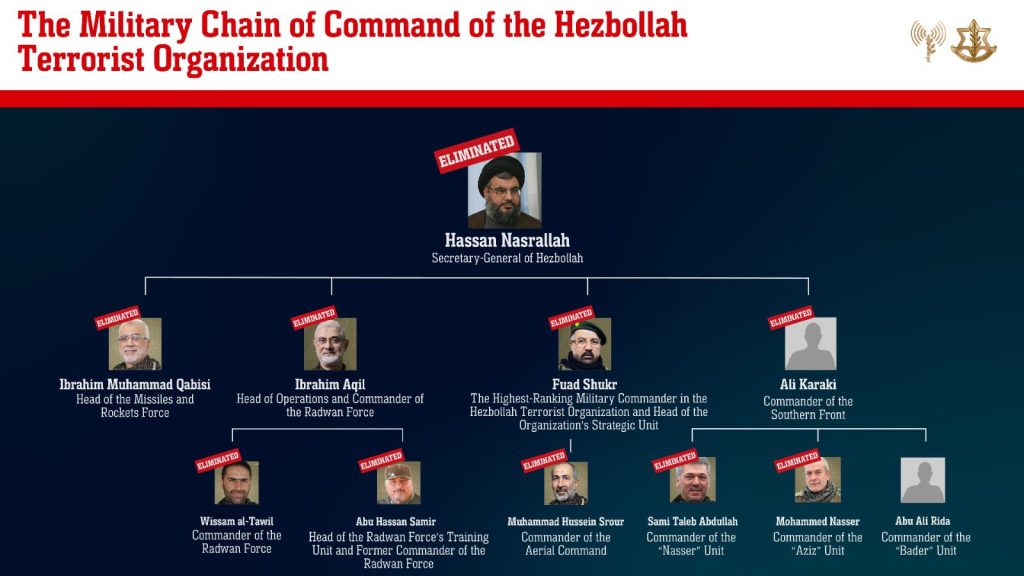The Shadow Falls: Hezbollah’s Leadership Decimated by Israeli Strikes

In the stillness of Beirut’s nights, amid the looming shadows of apartment blocks in the Dahiyeh suburb, death crept silently, hidden within the whir of jets high above. Israel had long prepared for this moment, their intelligence agencies weaving a web of espionage, following the movements of Hassan Nasrallah, Hezbollah’s enigmatic leader. For over thirty years, he had been a thorn in Israel’s side, always managing to elude their grasp, shrouded in the impenetrable secrecy of his bunkers. But September 27, 2024, would be different.
Operation New Order began in the early hours, not with an announcement but with the launch of over 80 one-ton bombs from Israeli F-15 jets, each carefully aimed to dig deep into the earth, flattening six apartment buildings above Nasrallah’s command center. While Nasrallah had spent years slipping from Israel’s crosshairs, the intelligence community had known of his hideout for months. It was not until the green light was given that the trap was sprung.
As the dust settled over Beirut, the operation was not an isolated event. The elimination of Nasrallah was only the final act of a methodical campaign that had already decimated Hezbollah’s military leadership. Ali Karaki, Hezbollah’s Southern Front Commander, had been one of the first casualties, taken out in an airstrike earlier in mid-September. Israeli jets, guided by pinpoint intelligence, then moved swiftly to eliminate Muhammad Ali Ismail, commander of Hezbollah’s missile unit in southern Lebanon, shortly after Karaki’s death. Ismail’s tactical significance made him a critical target, his role in launching deadly missiles toward Israel sealing his fate.
Israel’s air campaign rolled on like clockwork, striking one leader after another. Ibrahim Aqil, a veteran of Hezbollah’s Jihad Council, was killed on September 20, 2024, an event that marked the beginning of the end for the group’s hierarchy. Aqil, implicated in the 1983 bombings that devastated U.S. military barracks in Beirut, was no stranger to conflict, but this time, his adversary was relentless.
Ibrahim Muhammad Qabisi, head of Hezbollah’s rocket forces, followed soon after. With each strike, Israel chipped away at Hezbollah’s military backbone, leaving their forces disorganized and reeling.
By the time Fuad Shukr—one of Hezbollah’s top commanders—was eliminated in July 2024, it was clear that Hezbollah’s leadership was being methodically dismantled. Each blow delivered was not just physical but psychological, as Israeli intelligence made clear its unmatched penetration into Hezbollah’s inner sanctum. Ahmed Wahbi, who had overseen military operations in Gaza, and Taleb Abdallah, a key field commander, were similarly swept aside, leaving only Nasrallah standing.
The operation’s conclusion came in a way only a meticulous strategist might have envisioned. With Nasrallah lured into a false sense of security, continuing his operations from the underground bunker, Israel’s strike was timed with chilling precision. While Prime Minister Netanyahu was delivering his speech at the United Nations, Israeli jets were already racing through the skies, executing one of the most significant air raids in recent history. The final target—the elusive Hassan Nasrallah—had nowhere left to hide.






